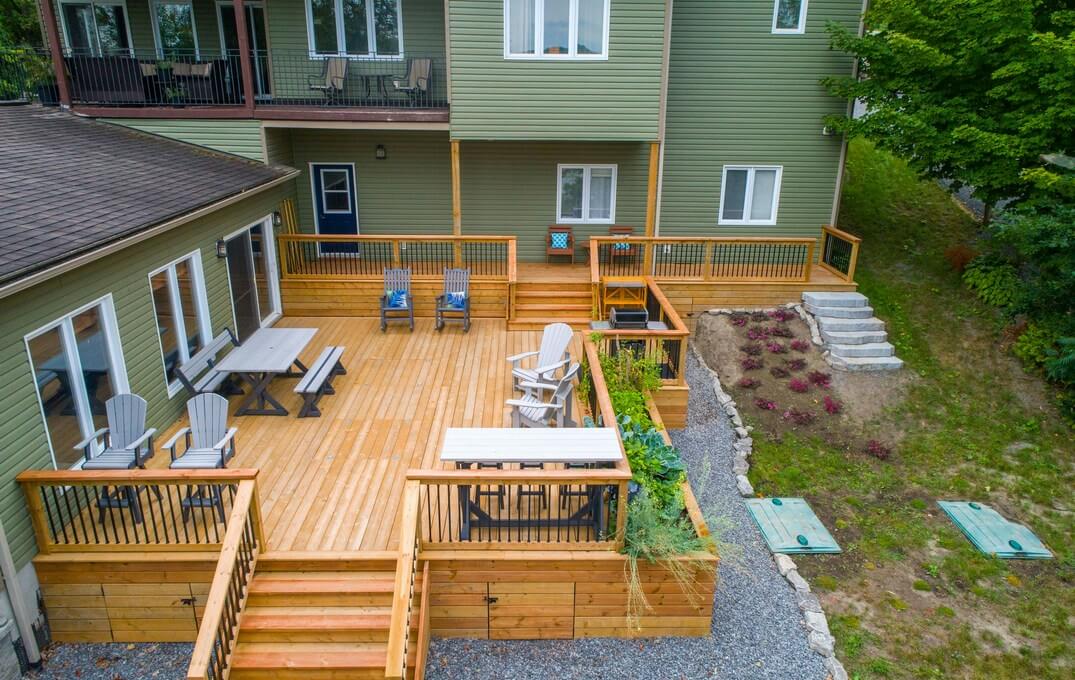Redwood along with pertaining legendary looks for your construction project can make an impact ecologically contributing to a sustainable future. Local lumberyards have been increasingly cutting back on composite lumber. It is important to point out that composite is just a fancy word for plastic, which is incredibly bad for the environment. Besides often being a cheaper alternative initially, composites offer little upside as a building material, especially for the life of your project.
We have always advocated getting the word out about green building practices in the construction Industry. Long after you have tired of your composite deck, it won’t be recycled; rather it will be put in a landfill. Composite decking manufacturers have stopped using the term maintenance-free when describing their products because of many costly lawsuits.
Environmental Benefits of Redwood Decking
According to the California Redwood Association (CRA), redwood is grown and harvested in accordance with the highest environmental standards in the world, tapping the sun for energy and soaking in California’s famed North Coast fog. Roughly 90 percent of all product-producing redwood forests are certified by the Forest Stewardship Council or Sustainable Forestry Initiative as sources of environmentally-sound building materials. In addition, redwood uses 97% less energy to produce than plastic.
But that’s not all—redwoods also excel at reducing carbon emissions. As they grow, the trees absorb carbon dioxide from the atmosphere, storing it in the wood and releasing oxygen into the air. When the trees are harvested, the carbon they had captured remains stored: an average redwood deck carries 500 pounds of carbon. Choosing redwood as a building material can reduce a homeowner’s carbon footprint. In addition, when lumber is milled into decking and other products, the bark, sawdust, and scraps are collected and used to produce biomass energy. In terms of sustainability, you can’t go wrong!
Redwood Deck Longevity
Premium woods like red cedar and redwood offer comparable levels of durability and longevity, lasting an average of 20 years. Both woods are naturally resistant to shrinking and warping, to boot. The primary difference between the two woods is color: redwoods range from light to dark red, while cedar hues run from light brown to salmon pink.
Redwood Deck Aesthetics
The main reason that builders and homeowners are returning to redwood, however, is aesthetics; redwood possesses a rich character and natural beauty that enhances the exterior of any home. It creates an aura of warmth and luxury, adding value while at the same time, providing an ecologically sound alternative for the environmentally conscious consumer.
Make sure you so research before deciding a building material for your project, you do will find that Valley Redwood lumber is the perfect choice in Sacramento.
References: buyredwood.com, bobvila.com
Valley Redwood
Quality Products and Services Since 1982
(916) 334-9500


